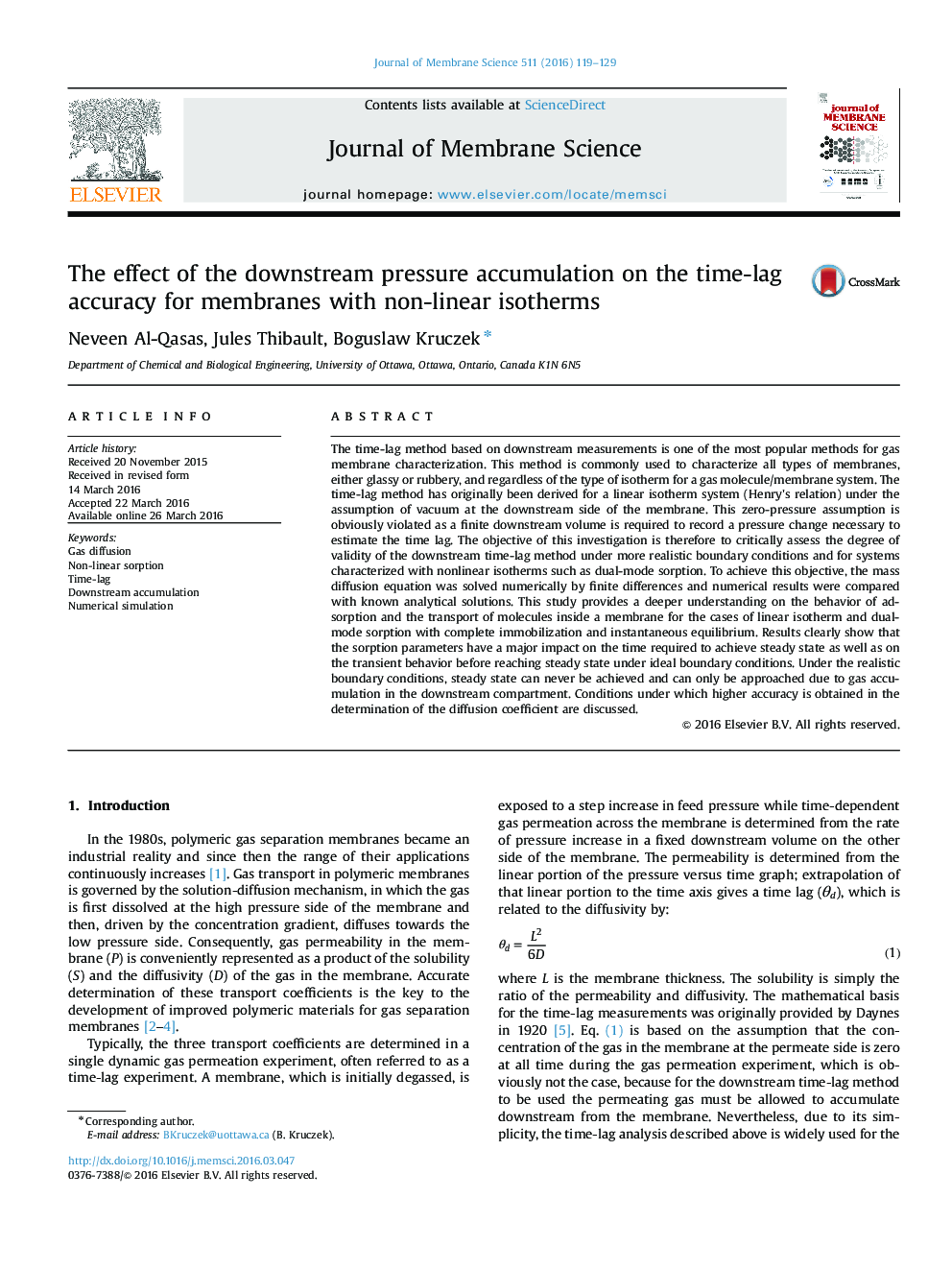| Article ID | Journal | Published Year | Pages | File Type |
|---|---|---|---|---|
| 632412 | Journal of Membrane Science | 2016 | 11 Pages |
•Time-lag of membranes following dual-mode sorption.•Evaluation of time required to reach pseudo-steady state permeation.•Quantification of error in membrane characterization due to downstream accumulation.•Stability of pseudo-steady state increases with non-linearity of sorption isotherm.
The time-lag method based on downstream measurements is one of the most popular methods for gas membrane characterization. This method is commonly used to characterize all types of membranes, either glassy or rubbery, and regardless of the type of isotherm for a gas molecule/membrane system. The time-lag method has originally been derived for a linear isotherm system (Henry's relation) under the assumption of vacuum at the downstream side of the membrane. This zero-pressure assumption is obviously violated as a finite downstream volume is required to record a pressure change necessary to estimate the time lag. The objective of this investigation is therefore to critically assess the degree of validity of the downstream time-lag method under more realistic boundary conditions and for systems characterized with nonlinear isotherms such as dual-mode sorption. To achieve this objective, the mass diffusion equation was solved numerically by finite differences and numerical results were compared with known analytical solutions. This study provides a deeper understanding on the behavior of adsorption and the transport of molecules inside a membrane for the cases of linear isotherm and dual-mode sorption with complete immobilization and instantaneous equilibrium. Results clearly show that the sorption parameters have a major impact on the time required to achieve steady state as well as on the transient behavior before reaching steady state under ideal boundary conditions. Under the realistic boundary conditions, steady state can never be achieved and can only be approached due to gas accumulation in the downstream compartment. Conditions under which higher accuracy is obtained in the determination of the diffusion coefficient are discussed.
